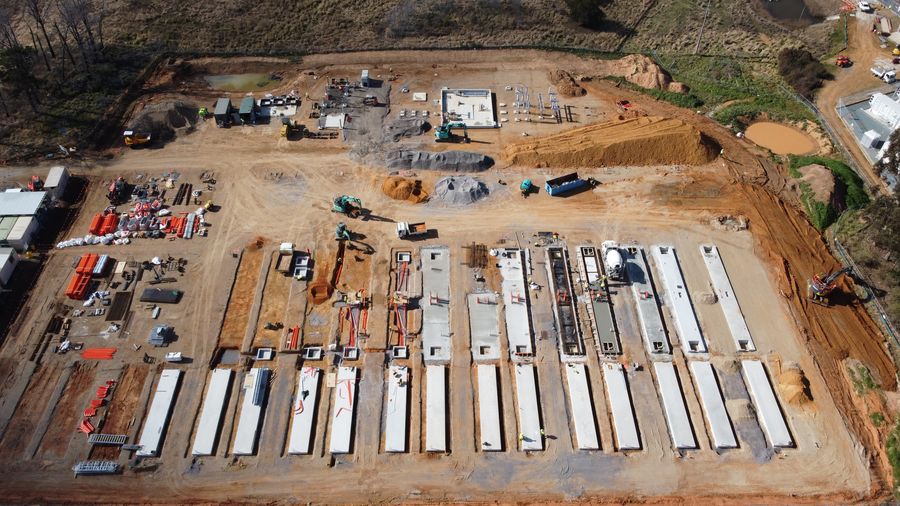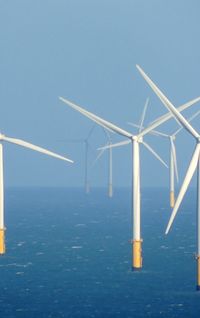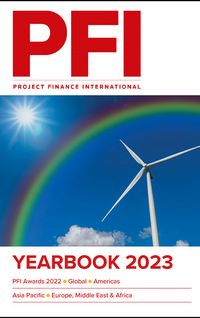Large-scale battery storage solutions have a crucial role to play in stabilising the nation’s grid: projects such as the 100MW Capital Battery will play a critical role in network support and enable the grid to accommodate more clean energy and support ambitions to reach net-zero. By head of solar and battery storage Niall Brady and associate director Nick Hawke at the Clean Energy Finance Corporation.
As an emerging industry in Australia, energy storage is expected to play an increasingly important role in our electricity market’s clean energy transition towards decarbonisation. Industrial battery storage solutions to strengthen our energy system will be needed to firm up the grid as variable renewable energy penetration continues to grow, helping to ensure frequency can remain within acceptable limits, and storing power when renewable supply is plentiful and demand is low – for example, the middle of the day when rooftop solar is generating – and dispatch it in those hours where demand is high and renewables are not generating –for example, on hot, still evenings.
Battery storage is the most flexible technology available in the current electricity market, providing near instantaneous charge and dispatch capabilities. The Rewiring the Nation policy proposes that at least A$20bn of grid-related investment will be needed to drive reliable new energy production and support new sectors including batteries.
While more than 920MW of large-scale battery storage is currently under construction in Australia1, AEMO has stated that the current 2GW of storage capacity will need to increase to 61GW by 2050 to meet energy demand through a mixture of utility-scale batteries, hydro storage and virtual power plants.
Capitalising on Australia’s unparalleled renewable energy generation potential, a range of long and short duration energy storage assets will be an important part of underpinning a future balanced grid. As demand continues to grow and coal-fired power plants retire, battery storage will have an important role in supporting effective load shifting to ensure renewable resources are able to provide supply at peak demand periods. As the market adjusts to this new technology, new markets and contracting opportunities will develop over time.
The Clean Energy Finance Corporation, Australia’s green bank, invests on behalf of Australians to deliver on our national commitment to achieve net-zero emissions and help front-run and develop these new markets and opportunities.
Recent disruptions to our energy supply further underscore the critical need to strengthen our electricity transmission network so it is fit-for purpose to bring large-scale renewable energy and energy storage to Australian consumers.
With A$1.45bn in new investment commitments made in 2021–22, including A$295m committed to project EnergyConnect to upgrade electricity infrastructure across NSW, South Australia and Victoria, large-scale energy storage projects are an increasingly significant part of the diverse investment portfolio built up by the CEFC since its inception a decade ago.
CEFC finance has helped deliver Australia’s two largest batteries, both sponsored by French renewable energy developer Neoen.
The 2016 state-wide blackout in South Australia sparked consideration about how large-scale energy storage can add value to a region where the power supply was heavily dominated by renewables, which will become the case for grids across the world in the coming decade.
South Australia’s Hornsdale Power Reserve (HPR), delivered in partnership with Tesla, the South Australian Government and the federal government via ARENA and a A$50m commitment from the CEFC, delivered a ground-breaking large-scale demonstration of the potential for battery storage to provide stabilising synthetic inertia services critical to the future integration of renewable energy.
With an expanded 150MW of generation capacity, the HPR allows for greater grid stability, reduces the risks of blackouts and offers greater flexibility benefits to customers as renewable energy reaches higher penetration through the grid.
The technology that the HPR deploys can help to prevent blackouts in South Australia by responding quickly and accurately to disturbances and fluctuations in the frequency of the grid. The battery does this when South Australia is separated from the rest of the grid, ensuring that the South Australian system has the capacity to maintain stability. This has been proven on several occasions since the battery entered service.
Aside from changing mindsets about what a big battery could achieve, Hornsdale saved South Australian energy consumers over A$150m during its first two years of operation and, after two years of testing grid-scale inertia services, has recently been granted approval to become the first big battery in the world to deliver grid-scale inertia services – a critical step towards managing a grid with increased renewable energy.
As the first project financing of a standalone large-scale battery in the Australian market, HPR provided a model for other investors and developers considering grid-related technologies, with the ability to be delivered in comparatively tight timeframes.
Big battery capacity in Australia was again boosted in 2021 by a A$160m commitment by the CEFC to Neoen’s 300MW Victorian Big Battery (VBB) near Geelong, the southern hemisphere’s largest utility scale battery.
Under the System Integrity Protection Scheme (SIPS) contract VBB signed with the Australian Energy Market Operator (AEMO), the battery provides system redundancy that enables AEMO to unlock up to 250MW of additional peak capacity on the existing Victoria to New South Wales Interconnector, an important capability during the peak summer season when utilisation of the interconnector is at its capacity. During these periods, the battery is able to provide an instant response to network disruptions on the interconnector through the provisions of balancing services, contributing to the delivery of a stable network and grid.
The VBB SIPS was able to be delivered at a fraction of what it would cost to directly upgrade the physical capacity of the interconnector. Independent analysis by PWC found that the VBB SIPS contract could deliver total benefits of more than A$220 to Victorian consumers in the next 11 years, including savings on power bills.
Project overview
The CEFC made its third large battery storage investment alongside private sector lender Infradebt in the Neoen-developed 100MW Capital Battery in October 2022. Expected to commence operation in early 2023, the battery is located in the Australian Capital Territory (ACT) near the Canberra suburb of Queanbeyan and is designed to accommodate more clean energy and support the ACT’s ambitions to reach net-zero emissions by 2045.
The battery will be capable of performing multiple roles including firming renewables, supporting the transmission network and providing frequency services.
Originally envisaged as a 50MW battery, its capacity was doubled after Neoen made the winning bid in the ACT 2020 renewable energy auction, in response to the emerging market for battery services.
South Korean technology partner Doosan Heavy Industries & Construction and its subsidiary Doosan GridTech were commissioned to build the project by Neoen, and provide engineering, procurement and construction services for the battery in addition to operation and maintenance services for a period extending over 20 years. The "Intelligent Controller" software developed by Doosan to operate the battery will manage energy arbitrage, fast frequency response and any ancillary services provided by the project.
A first-of-its-kind structure
The development of the Capital Battery has been uniquely underpinned by the innovative virtual offtake agreement with AGL Energy (AGL). The seven-year virtual battery agreement for 70MW of capacity, gives AGL the ability to hedge its customer load by way of a financially settled contract under which AGL can give instructions to virtually charge and discharge a battery as and when it chooses, and receive revenues as if the battery had been participating in the market according to those instructions. The virtual battery arrangement allows AGL to utilise many of the benefits of a grid-scale battery without having to build, own or operate the asset itself.
The contract trades on a virtual, "energy only" basis, allowing for Neoen to optimise trading between energy arbitrage and Frequency Control Ancillary Services (FCAS), which are used by AEMO to maintain the frequency on the grid’s electrical system and alter the generation or demand to maintain the generation/demand balance. The virtual structure is the first of its kind for a battery in the Australian banking market and is an innovative structure in the storage sector more generally.
AGL will be able to virtually discharge or charge over the five-minute settlement trading intervals recently introduced to the NEM, helping to counteract the financial impact of the "duck curve" – the timing imbalance between periods of peak demand in the evening and peak renewable energy production when the sun shines in the middle of the day.
Developing emerging industries
The Capital Battery has been financed by senior debt facilities provided by the CEFC of A$35.5m alongside its co-financier, specialist infrastructure fund manager Infradebt, which also committed A$35.5m of senior debt, and equity investment from Neoen. Capital Battery demonstrates a maturing of the financing market and marks the first time the CEFC has introduced a co-lender to a battery project, having funded its previous senior debt battery financings on a sole basis.
The CEFC works to "crowd-in" private sector capital from co-financiers to demonstrate the attractions and capabilities of investment in the sector, to grow market confidence in merchant storage revenue streams.
Similar to when the renewables sector was first getting established in Australia, the lending market has been somewhat hesitant to debt-fund standalone battery projects with merchant exposure.
The unique nature of the CEFC means that it has the ability to take risks to achieve policy outcomes while still achieving financial returns. For the CEFC, a heightened level of certain risks that traditional commercial financiers may struggle to accept may be appropriate in specific circumstances in pursuit of broader public policy objectives and to demonstrate bankability models to the private market.
With this broader remit for risk appetite, the CEFC has been uniquely placed to play an entrepreneurial role in structuring and helping to enable transactions such as the VBB, HPR and Capital Battery.
Large energy storage projects of this scale require substantial tailored investment solutions, reflecting their high start-up capital costs and emerging and untested revenue models. The emerging market for risk mitigation services provided by batteries is another area of growth.
Community sharing initiatives
Residents of the ACT region will have the opportunity to invest in the Capital Battery through a community co-investment fund when the battery is switched on in 2023. Community ownership models allow participants to participate in the ownership of key local energy assets and contribute to community energy development and scale-up of renewables.
The Capital Battery set up will allow community investors to acquire rights to a portion of the earnings of the project. Community battery schemes have been supported at a "neighbourhood" level in Australia, while the concept has been developed more thoroughly in some parts of the European Union where community-driven energy storage projects and certain ownership levels are mandated.
Demonstrating the economic case
Initial predictions of a slow and gradual build-out of grid-scale batteries in Australia have been largely exceeded, with Australia surpassing 1GWh of annual battery storage deployments in 2021. Early movers in the grid-scale battery sector have been rewarded with strong returns for the battery assets that are already operating in the grid.
Further acceleration of the battery build-out in Australia currently faces supply constraints that are affecting both the capital cost of grid scale battery systems and delivery timetables.
Lithium and nickel supplies – both facing competing demand from electric vehicle makers – as well as freight and logistics challenges posed by Covid have been seen, however, demand for large-scale battery growth has continued to defy expectations, reflecting the enormous need for storage in the network as traditional forms of generation exit the system and the penetration of intermittent renewables increases.
Large-scale battery use in the Australian electricity grid is expected to keep growing in the long term due to technological advances, cost declines and the deployment of super batteries with greater economies of scale.
Without any grant or subsidy, the Capital Battery’s funding is further evidence of the advances in the economics of the technology, and the participation of AGL opting for virtual offtake shows that capital costs are competitive enough to produce a product that has commercial value. The technologies utilised in the Capital Battery are largely standardised and scalable with a proven track record, and could apply to more projects as additional batteries come online. While battery storage is an emerging technology, the trajectory for big batteries shows great opportunities for investors.
Footnote
1 - CEFC 2022 Annual Report p44
To see the digital version of this report, please click here
To purchase printed copies or a PDF of this report, please email leonie.welss@lseg.com


















